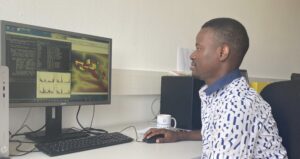Towards a More Sustainable, Environmentally Friendly Agriculture
Author: Francis Musyoka, BOKU
It has been widely stated that we did not inherit the earth from our ancestors, but rather we borrowed it from our children. This statement is especially true for agricultural soils and water resources. If we do not make an effort to conserve the soil, then we will be answerable to future generations. Agriculture provides us with food for nutrition, health, and survival, and it is also an income earner for many individuals and families. A rapidly increasing world population greatly increases food demand, which puts substantial pressure on our agricultural lands. To feed this growing population, we may damage our land and water resources.
Water is an important resource for agricultural food production. My passion for a sustainable future led to an MSc. program in water engineering at the Pan African University (PAUWES) in Tlemcen, Algeria. There I developed an interest in catchment hydrology and hydrological modeling. I realized that models, when well utilized, serve as important tools to provide cost-effective and time-efficient evaluations of different hydrological aspects at both catchment and field scales.

My research within SHui focuses on improving agricultural productivity while also taking cautious steps toward managing soil erosion and minimizing water pollution from agricultural sources. The Institute of Soil Physics and Rural Water Management (SoPhy) at the University of Natural Resources and Life Sciences, Vienna (BOKU) has offered me the opportunity and the resources to learn and advance my skills in hydrological modeling using the SWAT model. My goal is to integrate hydrological modeling and field observation data to provide realistic predictions and assessments of soil and nutrient loss from agricultural fields.
The HOAL catchment is an extensively monitored watershed, and therefore high-quality data is available. My PhD project focuses on developing a multi-level approach to model calibration and validation for the SWAT model. The calibrated model will thereafter be used to evaluate agricultural management practices and propose methods for improving agricultural productivity while also conserving soil and water.

